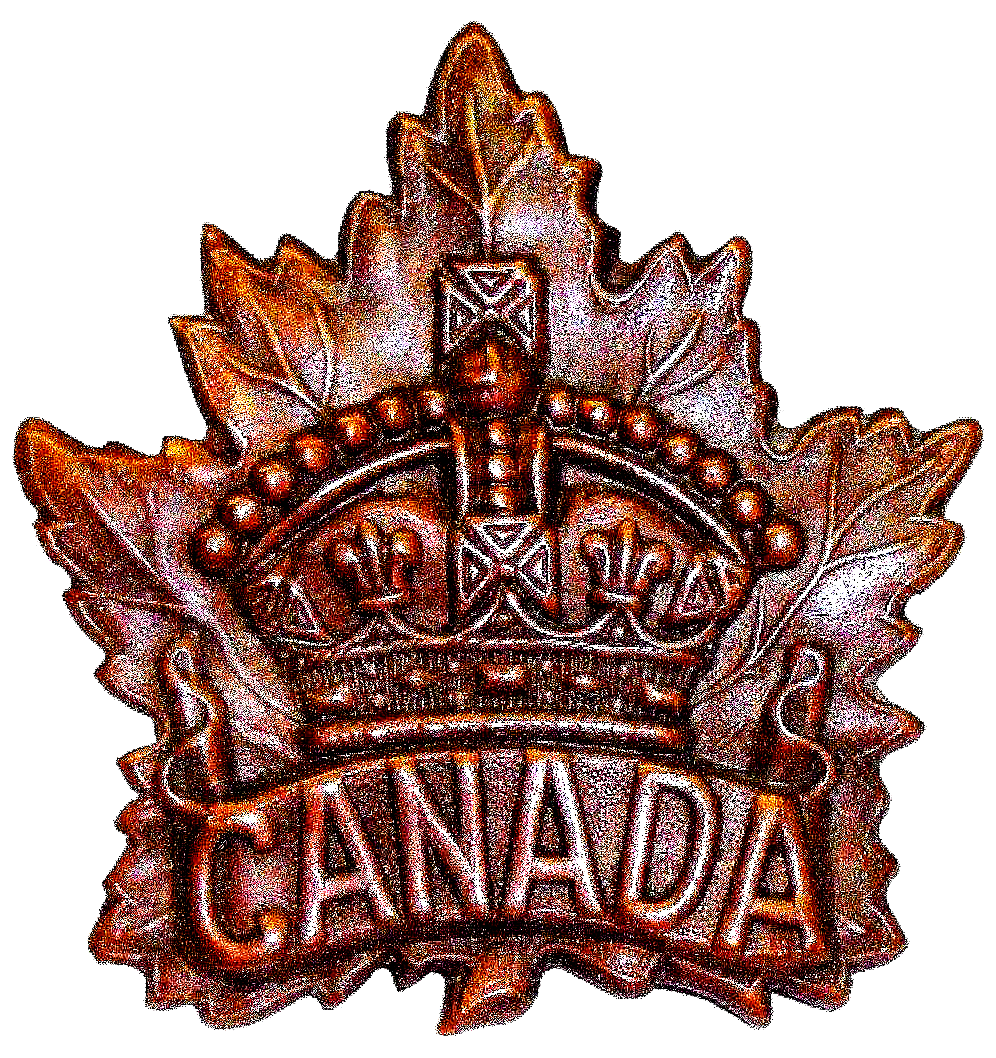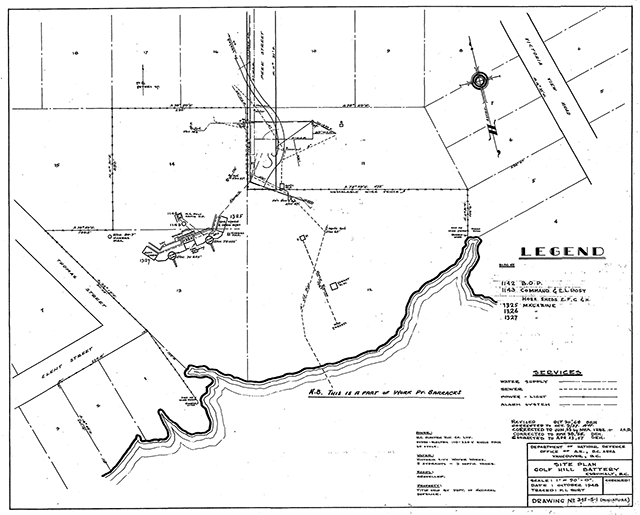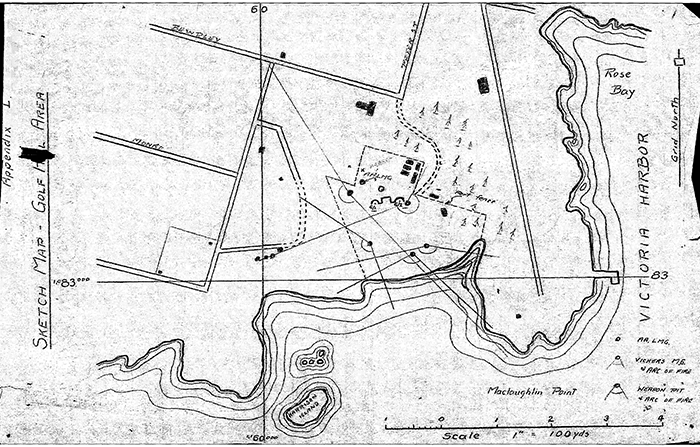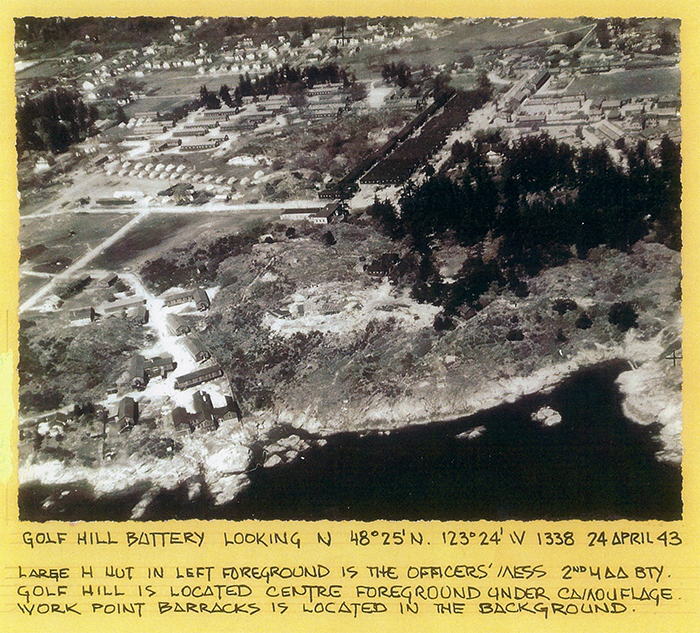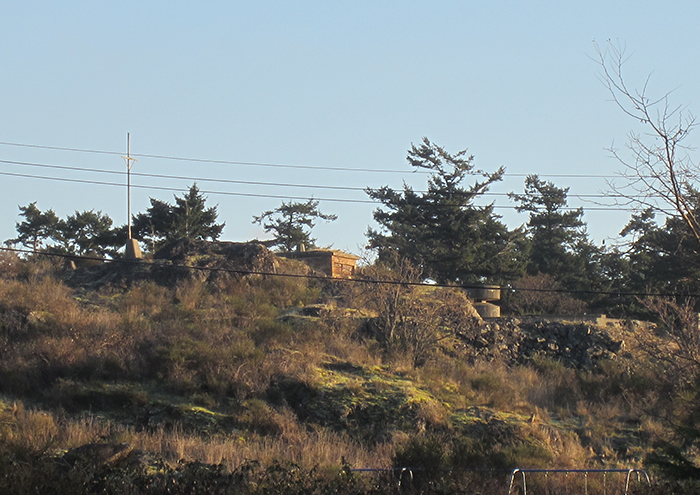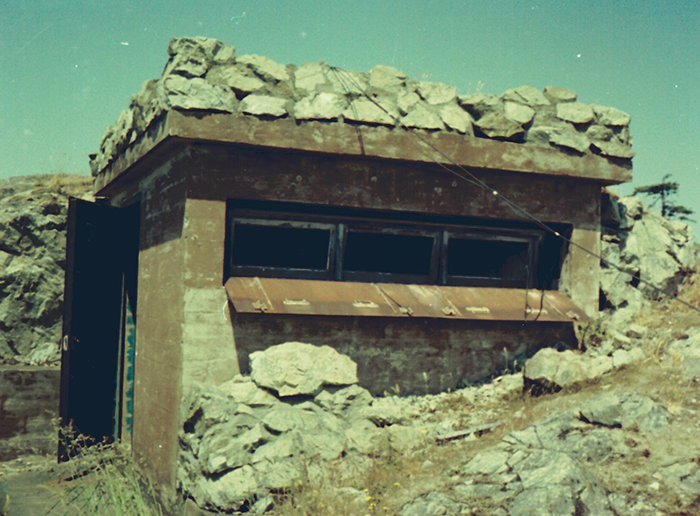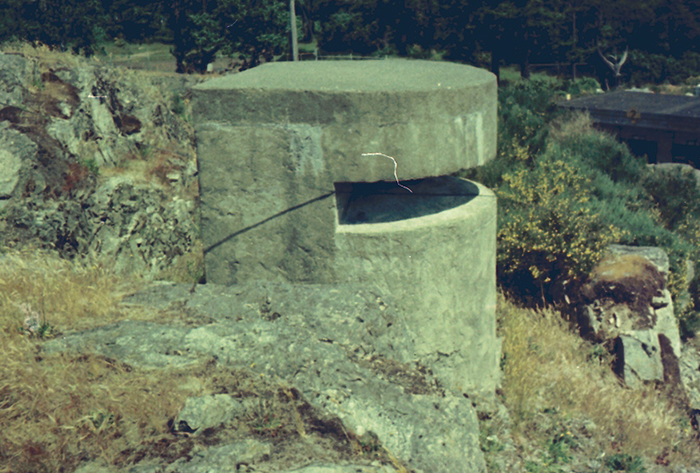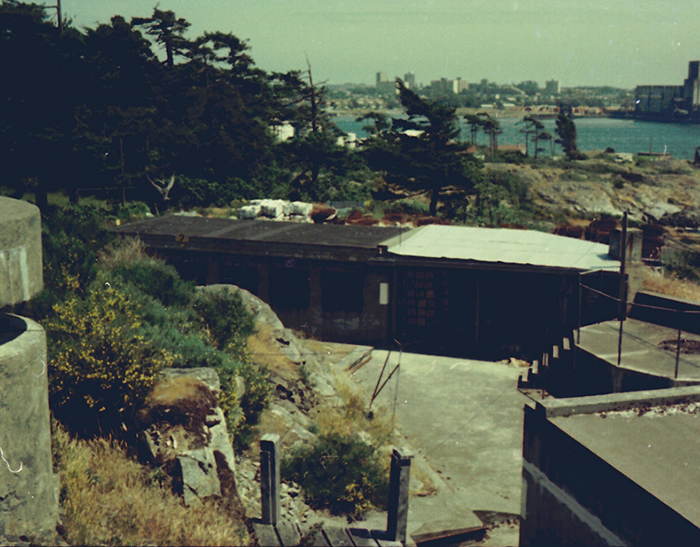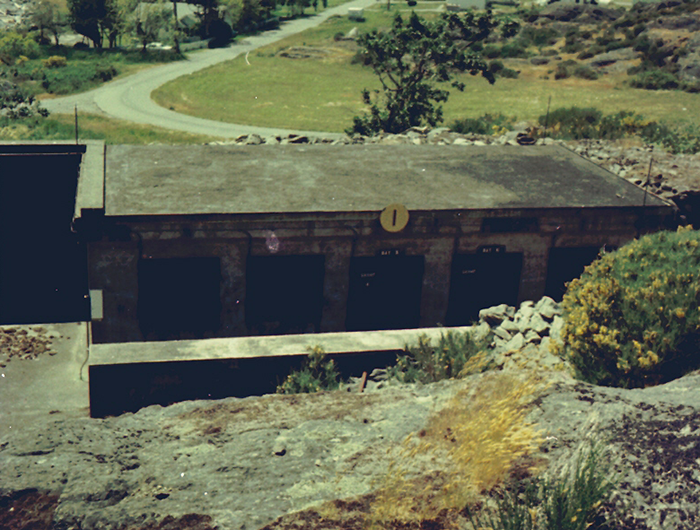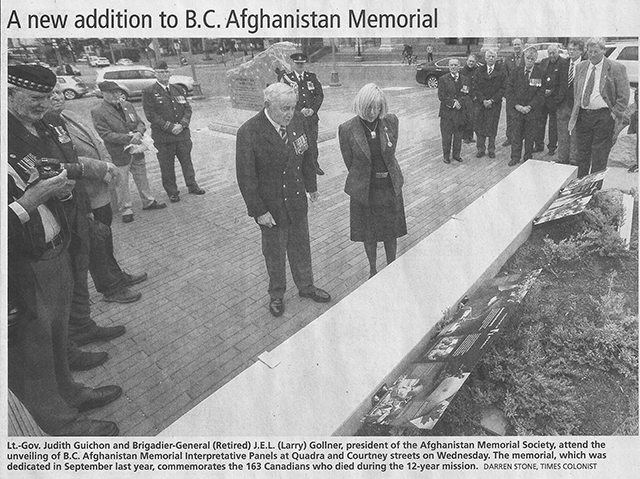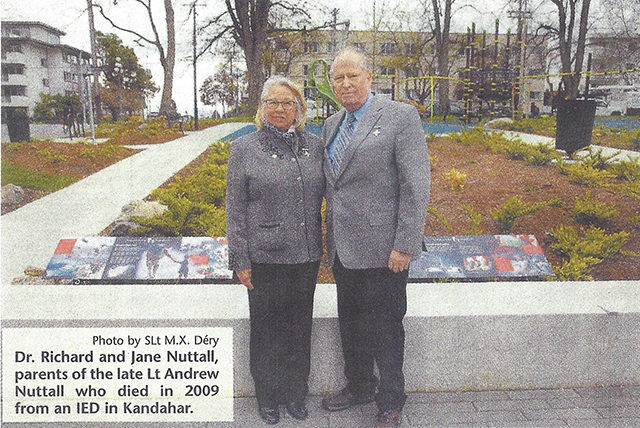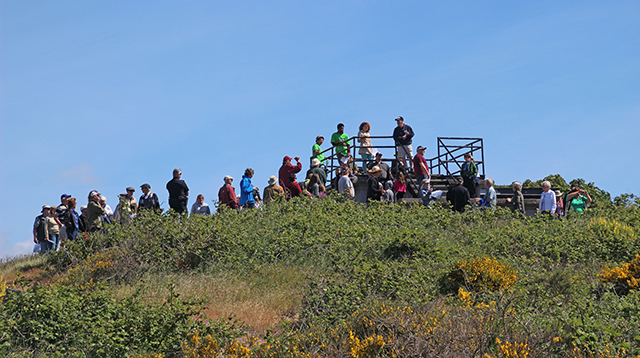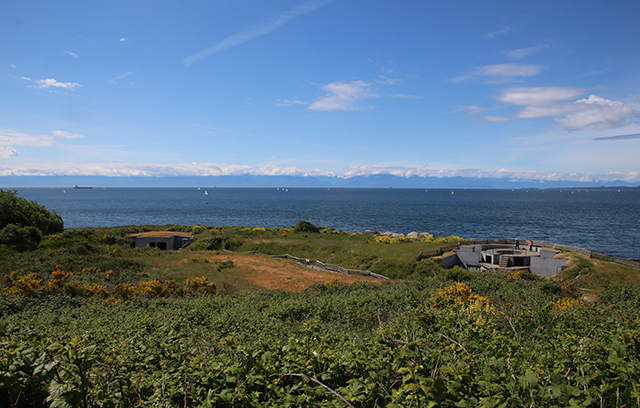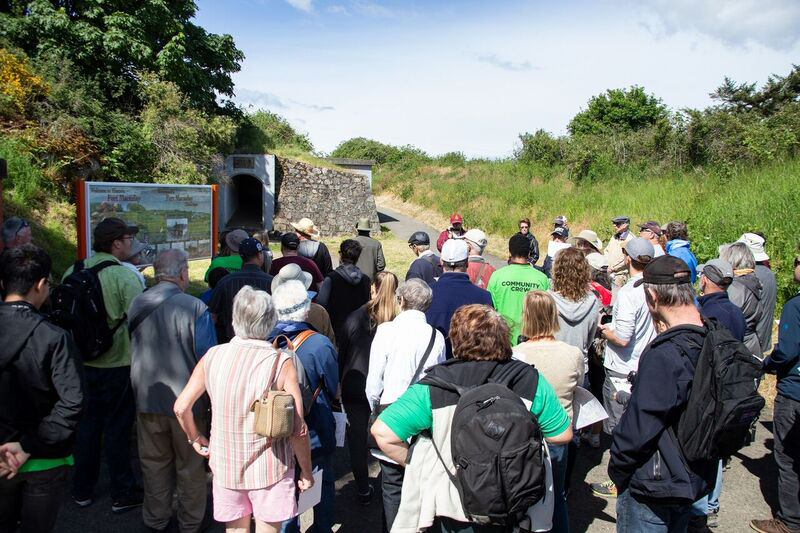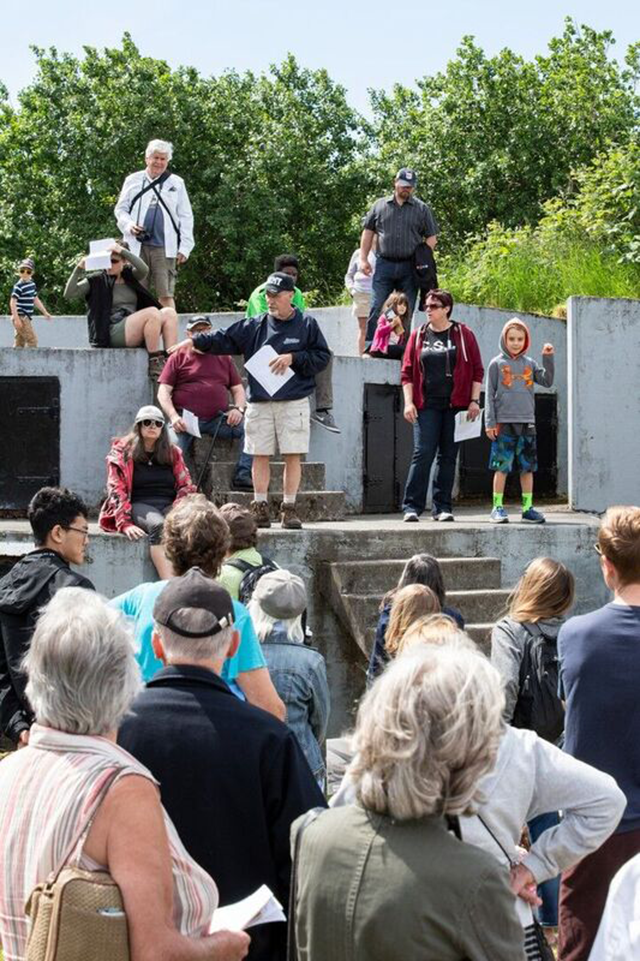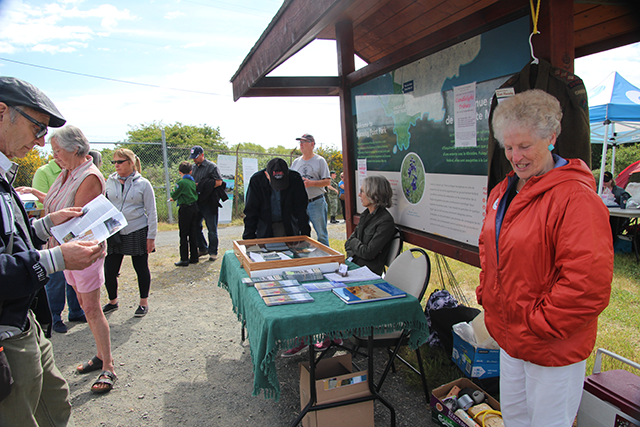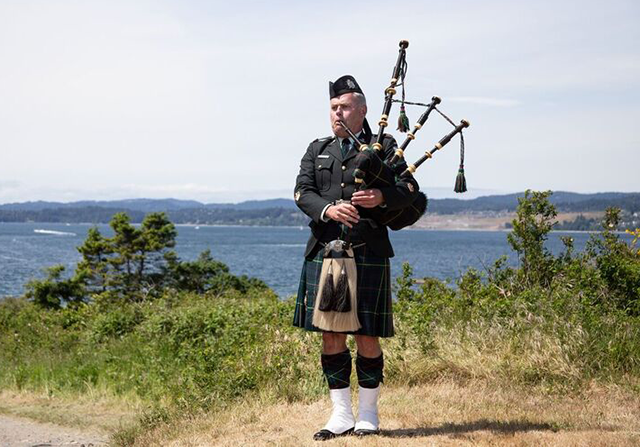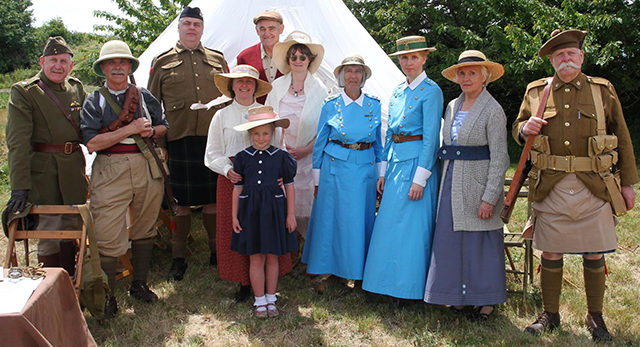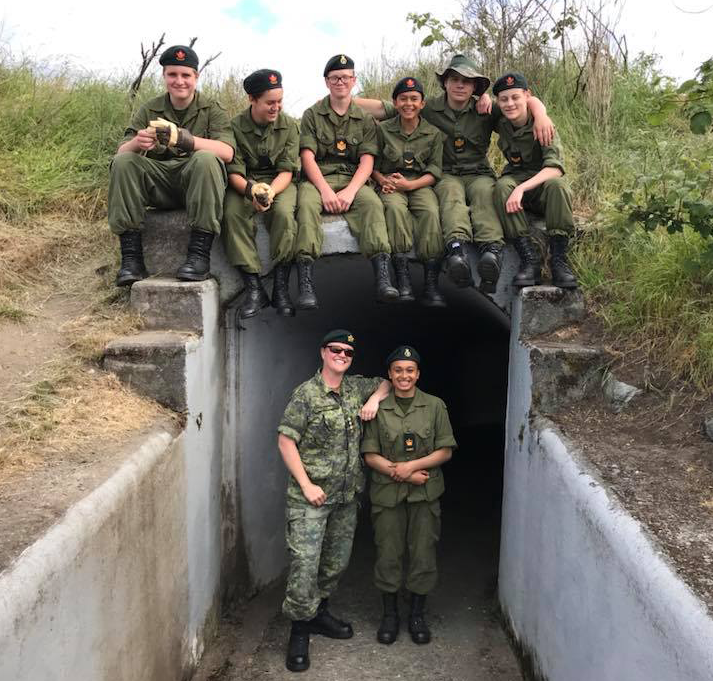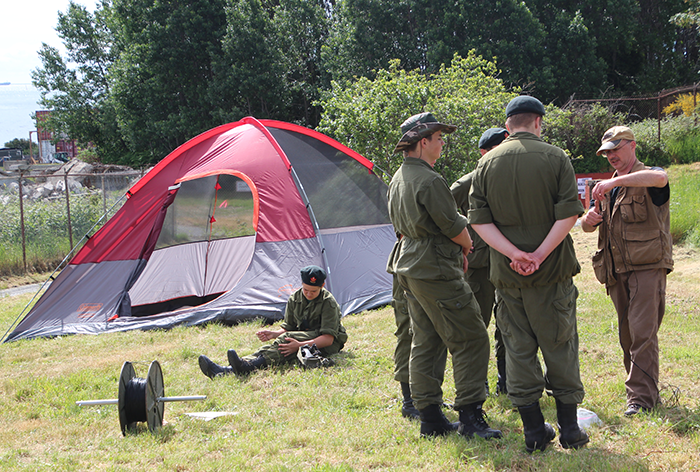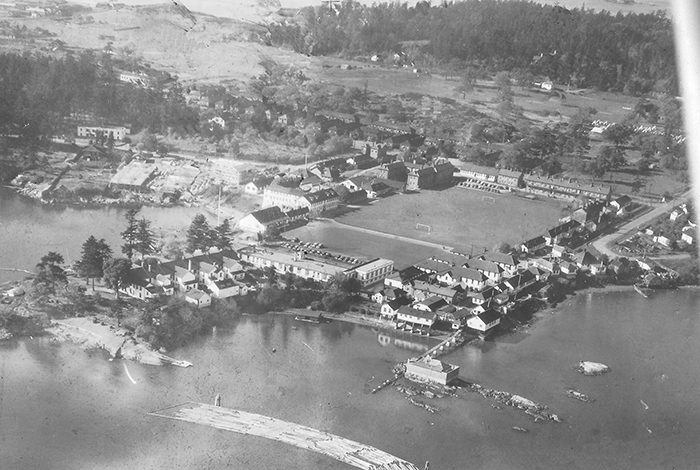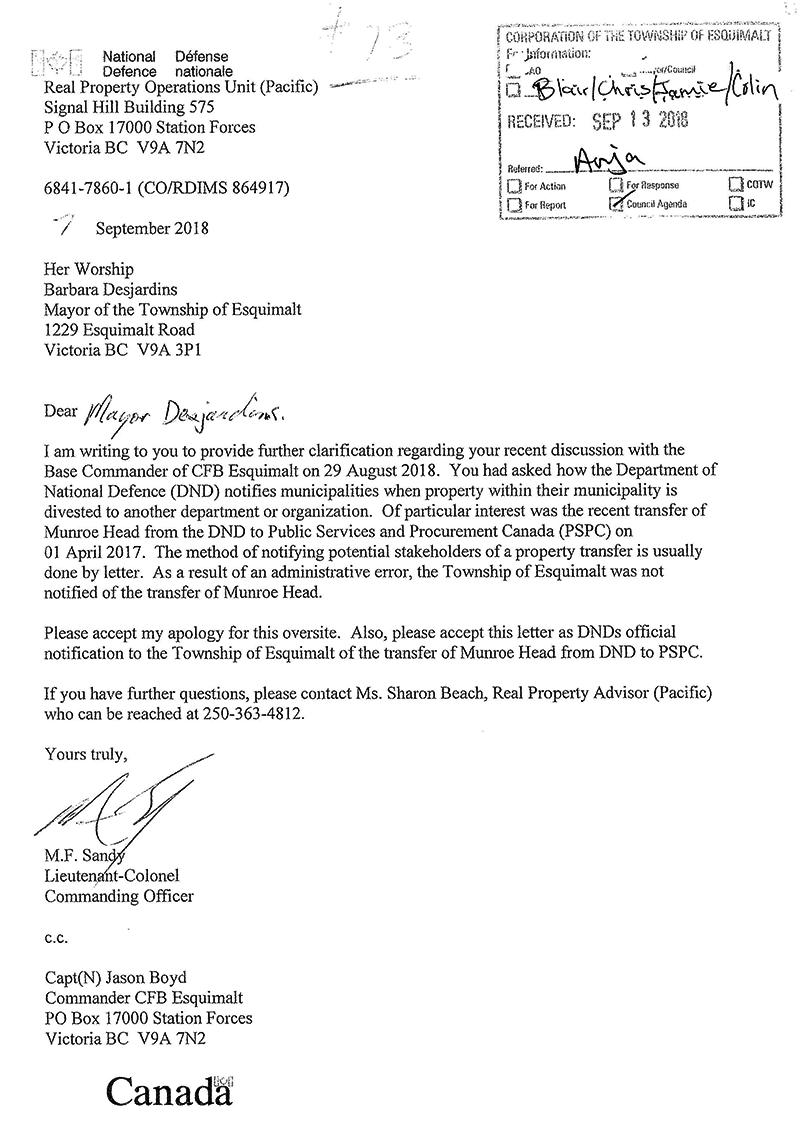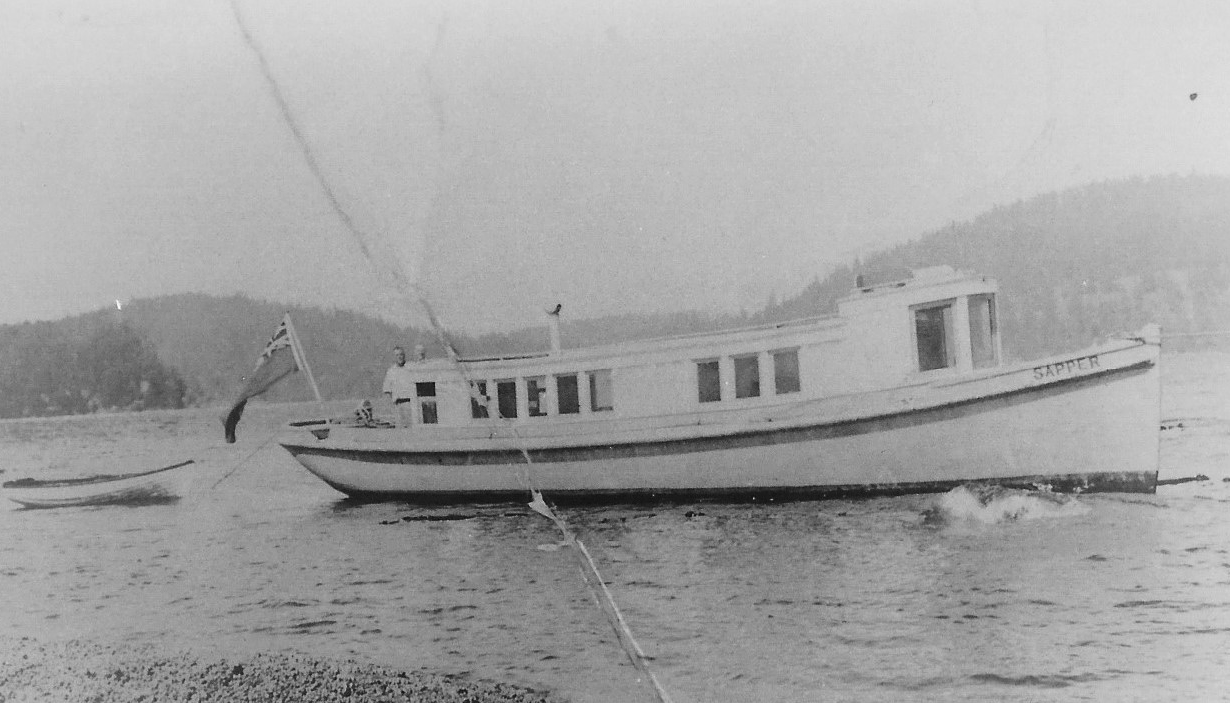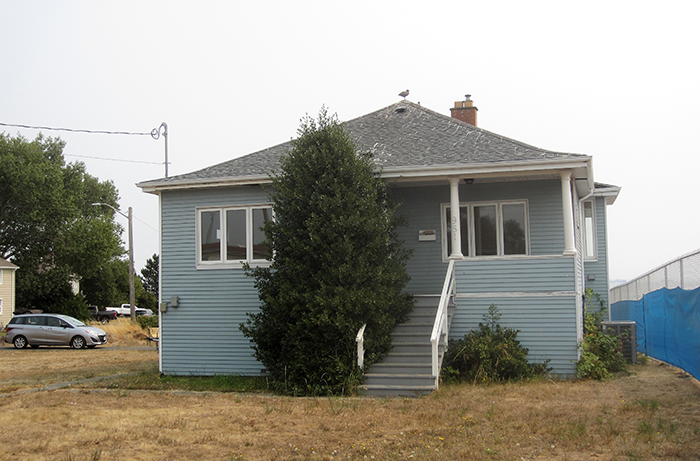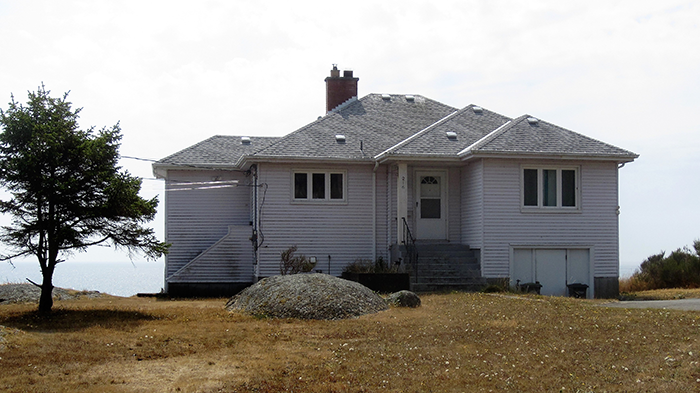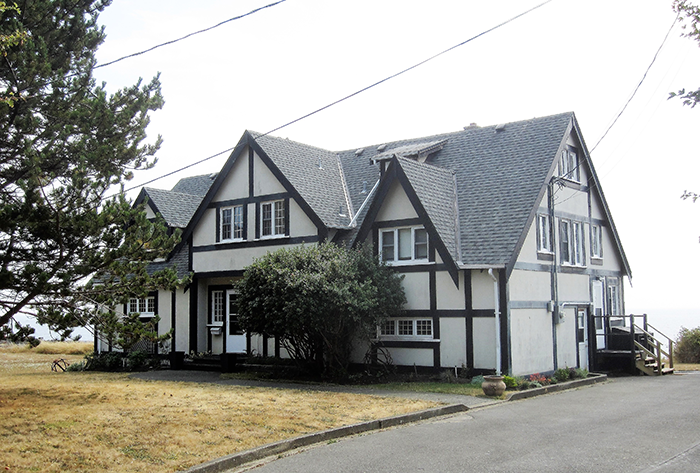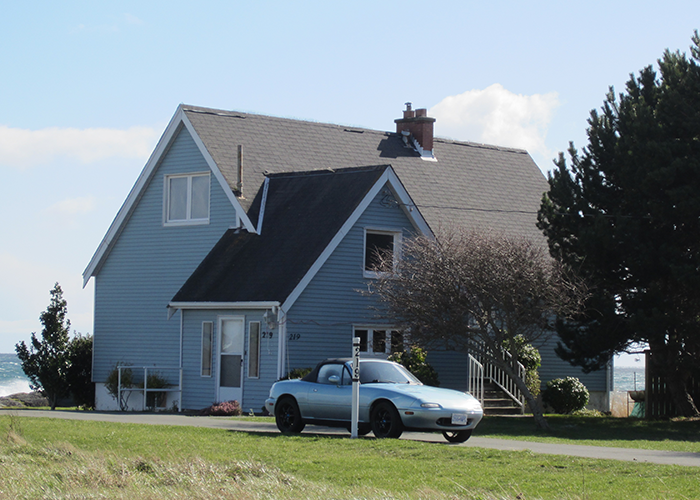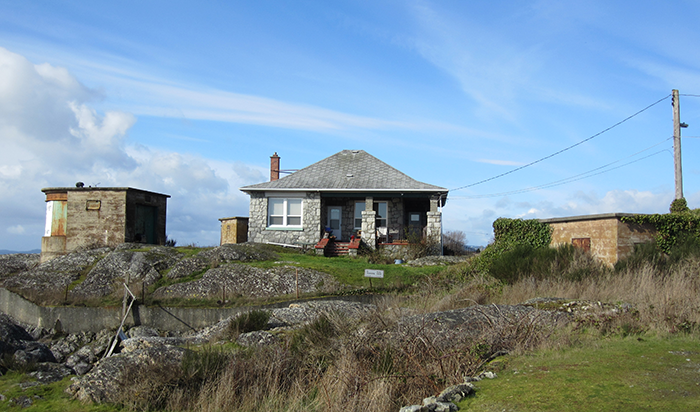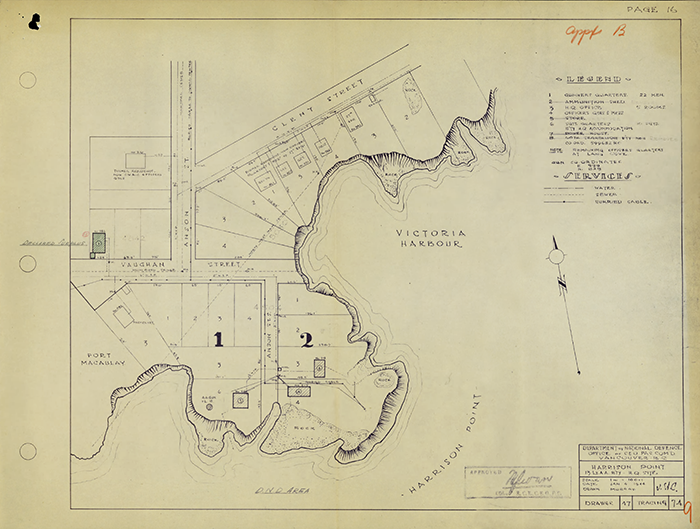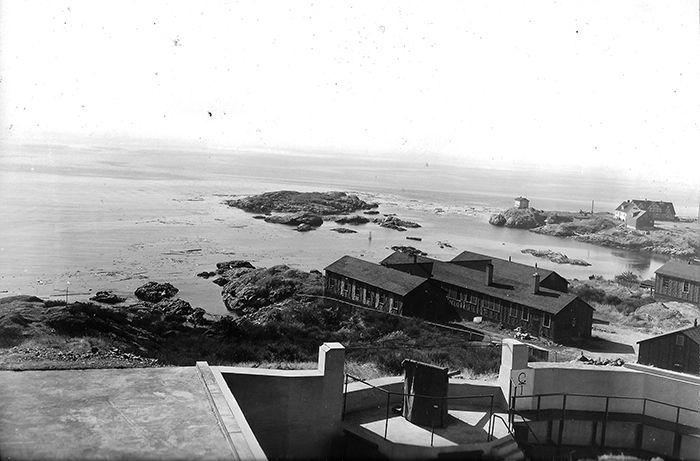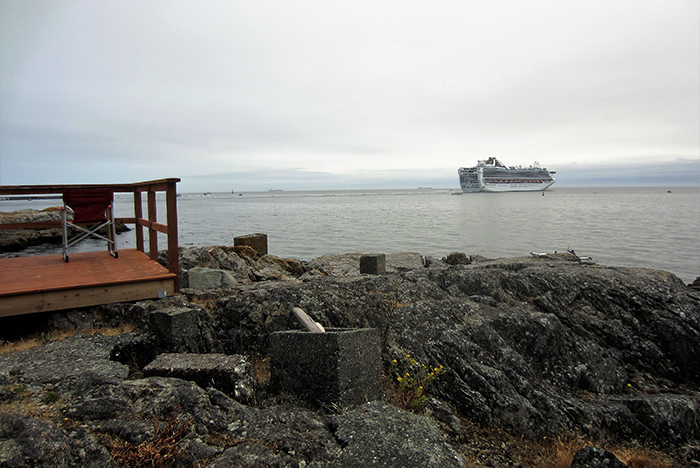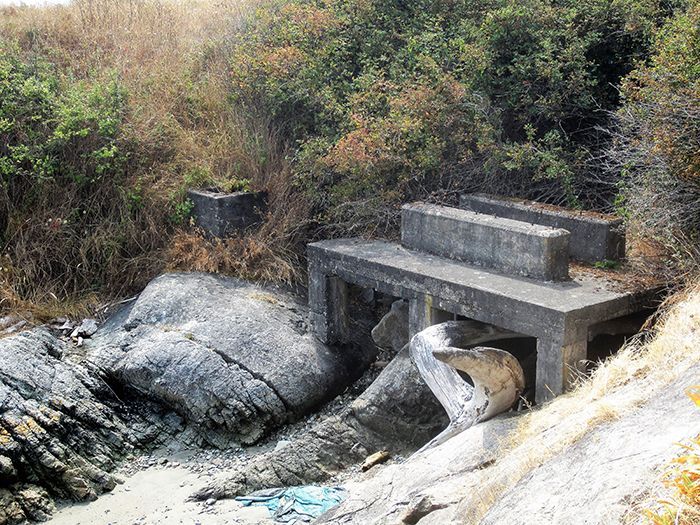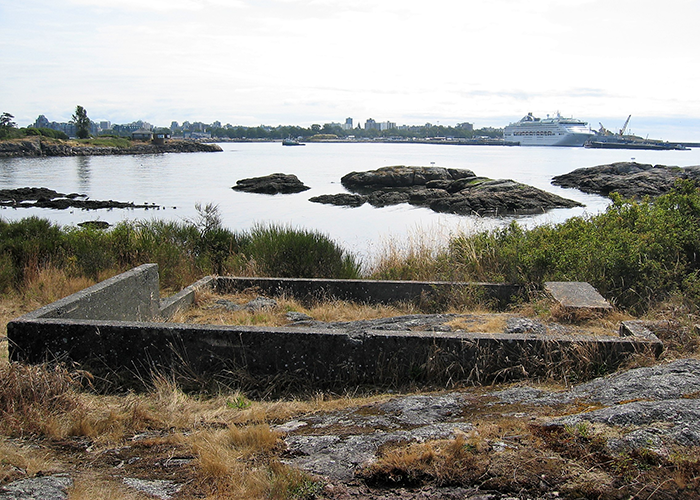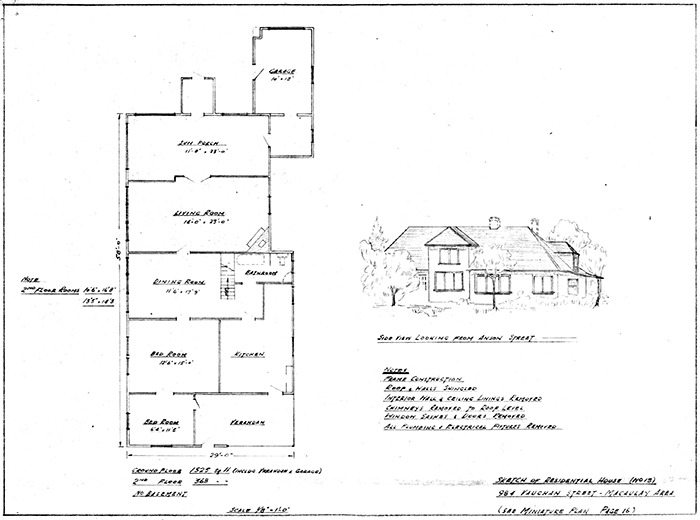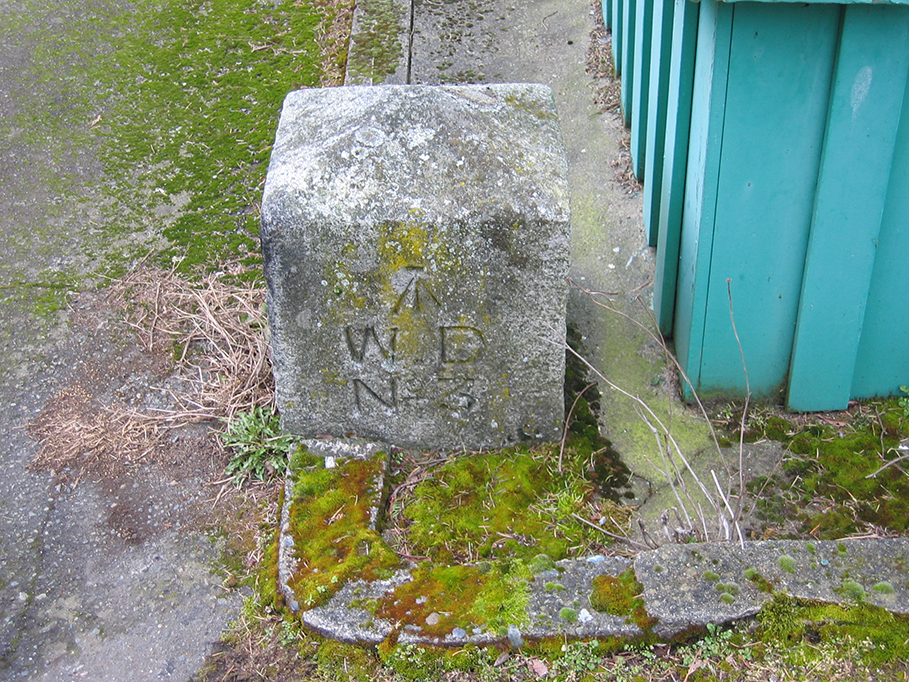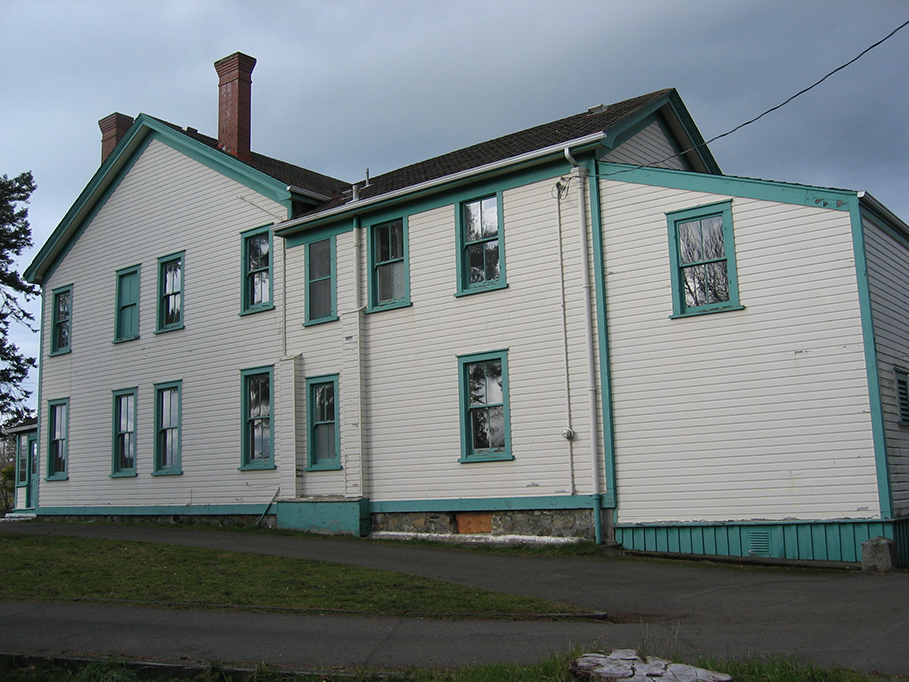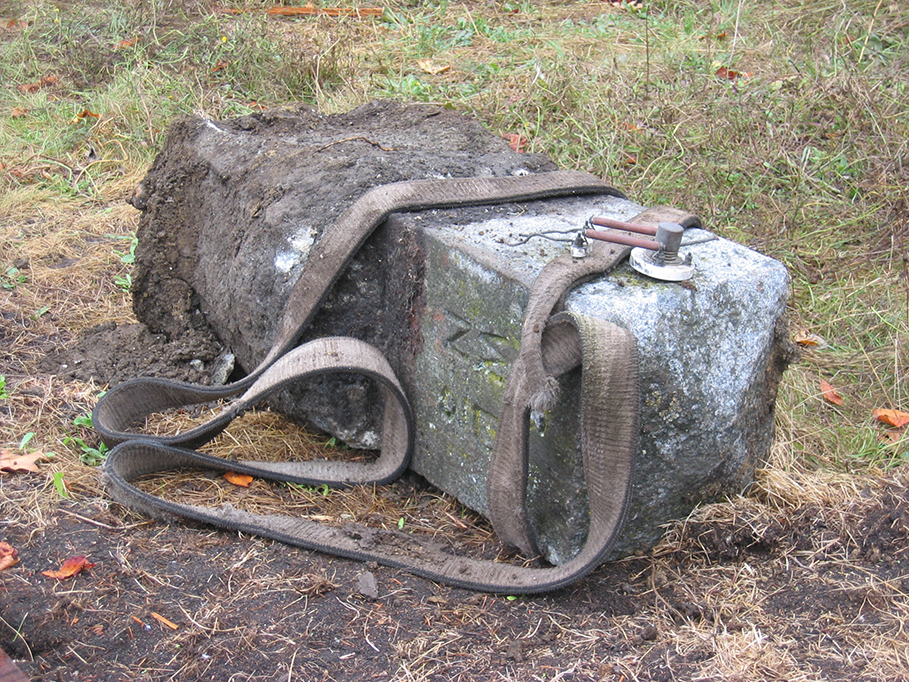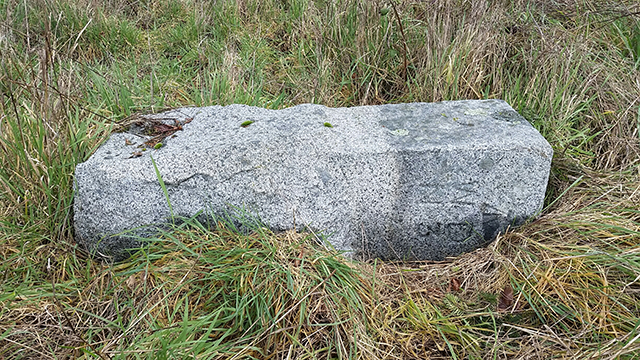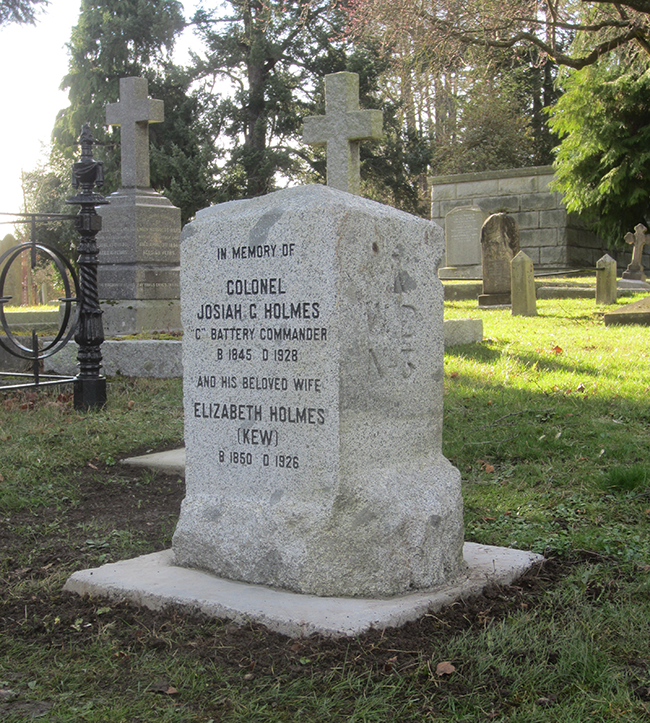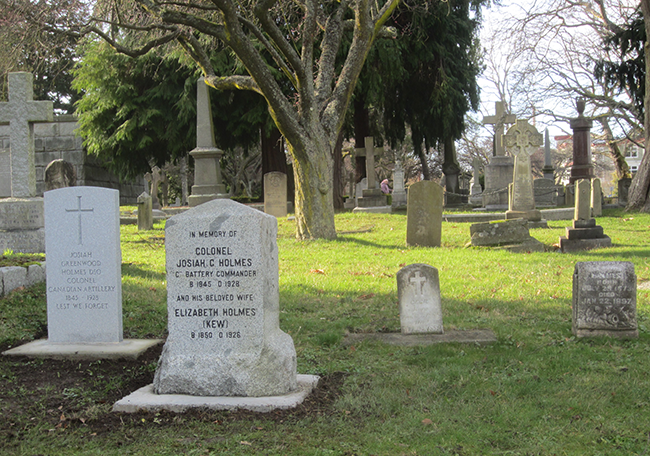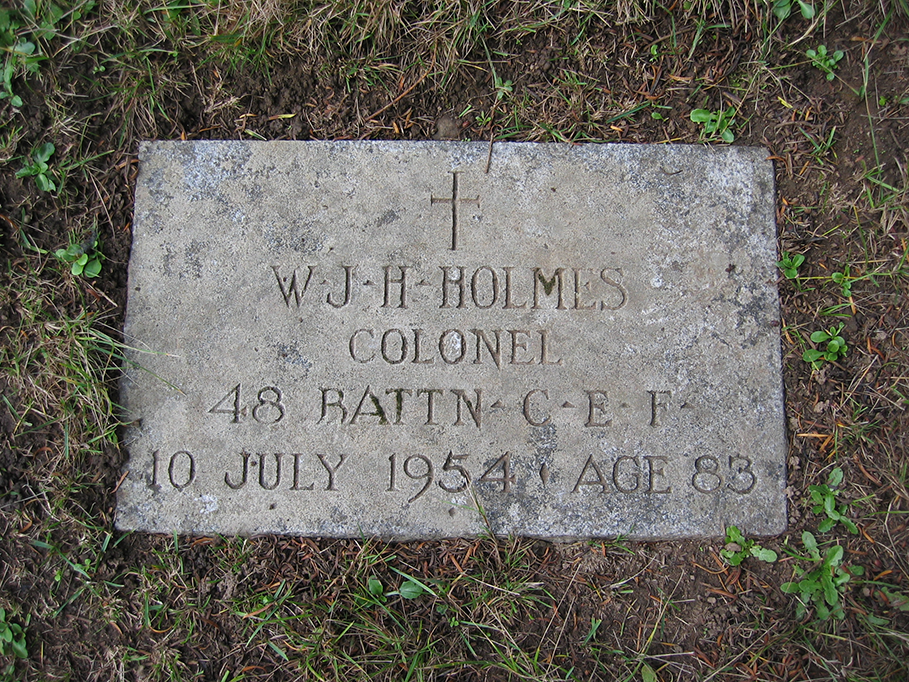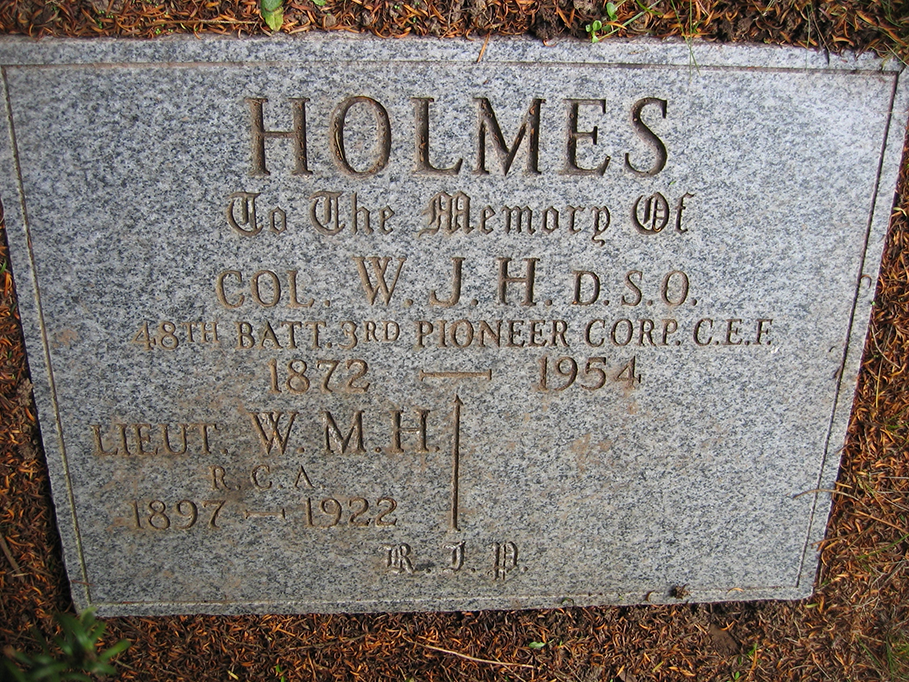 |
 OPCMHVisitor No.: |
HISTORY OF WORK POINT BARRACKSby Jack BatesPART 10 — 1995 to 20222018LOOKOUT A fitting and generous way for the Greater Victoria Afghanistan Memorial Project Society to close its financial books by donating its residual monies in dissolution of the society to the Cockrell House. Click here for Chek Around Verity Healthcare and Cockrell House from CHEK TV. Click here for Cockrell House Presentations. CRD Wastewater Treatment Project An open house was held at the Esquimalt Legion regarding the Macaulay Point Pump Station and Forcemain Construction. All construction will be within the current CRD property including a public area water side of the new pump station opposite “Pirates Cove.” The landscape design supports Macaulay Point Park Management Plan goals. WORK POINT – GOLF HILL GOLF HILL The highest point of land within Work Point Barracks is the Golf Hill summit at 100 feet above mean sea level. By comparison, the Fort Macaulay high point is 77 feet and the high point rock west of Peters Street at Malvern Street is 86 feet. The Golf Hill height afforded a commanding advantage over the entrance to Victoria Harbour for defensive purposes during the Second World War and accordingly an artillery battery was built there commencing in 1938. The armament was two 12 pdr Quick Firing guns relocated from Black Rock in the dockyard and included small arms and machine gun posts. Immediately to the north and west towards Bewdley Avenue were the 7th T box, the 4th T box and the 3rd green of the 1894 United Services Golf Club (Macaulay Point Golf Club) where remnants of those level areas remain evident today. The Golf Hill Battery of the Second World War era remains secure within a chain link fence with the entrance gate locked at the end of Peek Street, once a gazetted road allowance but now a long gravel driveway off Bewdley Avenue. Currently at the top of Golf Hill there is a microwave tower for communication purposes, an obvious opportunity. Peering over and through the fencing you can see the abandoned fortress structures and there is also a flag pole to promote your interest. This site remained in training mode until the mid 1980’s by the QOR of C and PPCLI battalions stationed at Work Point Barracks and is subject to UXO references.
HISTORY OF THE FORT The fort was built in the years 1939-1940 and was formally taken over by the 60th Heavy Battery, R.C.A., C.A.S.F., Major R.E.A. Diespecker, ED, Commanding, on July 4th, 1940. The guns of the fort were installed in June, 1940 and were considered to be in action as from Thursday, July 25th, 1940, when five rounds were fired from each gun. On September 15th, 1940, on re-organization of the inner forts, Golf Hill was taken over by the 55th Heavy Battery, R.C.A., C.A.S.F., Major C.W. Barker commanding. Major C.W. Barker left the battery on October 20th, 1941, and Lieut. C.W. Stanbury took over as acting O.C. from October 20th, 1941, until November 3rd, 1941. On November 3rd, 1941 Major T. McGimpsey took over the command of the 55th Heavy Battery, R.C.A, C.A., until August 29th, 1942. Captain D.F. Thomas succeeded Major T. McGimpsey until November 15th, 1942. The battery was taken over by Major C. FitzGerald on November 15, 1942. Major C. FitzGerald left the battery on April 26th, 1943. On the 27th Of April Major C. Oldum took command of the 55th Heavy Battery, R.C.A., C.A. The 60th Coast Battery, R.C.A., C.A., took command of Golf Hill Battery on August 15th, 1943 under command of Major R.R. Ward. 18th May, 1944 60th Coast battery, RCA-CA 1. Local Defence of Battery
2. Vulnerability to Attack by Ships Guns or by Aircraft
3. Location of Conspicuous Objects Relative to the Battery
4. Magazine
5. Searchlights
6. Beach Defence
7. Concealment
9. Barracks
10. Vulnerable Points
Snd. (HH Hibbard) Lieut. RCA GOLF HILL BATTERY Construction Details: The fort proper is irregular in design, being 35‘ wide at its greatest width, and 172‘ overall.. It is constructed of reinforced concrete. The average height of the walls is 9‘. The southern wall, extending the length of the fort, is 2‘ thick and slopes outward reaching a maximum width of 4‘ at the base. All other interior walls are 2‘ thick and partitions 1‘. The roofs are 1‘ thick with the exception of the magazines which are 2‘- 6“ and set on steel sheet piling. The whole area is covered by a reinforced concrete floor 1‘ thick but varying in places due to slopes. For particular details of construction see plan #52111-2 in end pocket of this book. The accommodation of the fort is from east to west:
Other details: Men’s living and messing quarters are shown in the extreme N.E. corner of Block 14 as shown in site plan in end pocket of this book. These are all of simple frame construction and are as follows:
Officer’s Quarters are in N. W. portion of Block 12 and are shown in above mentioned site plan. The Command Post is situated immediately behind the magazines at a plane distance of 45’ from them but at an elevation of 90’. It is built of reinforced concrete with 1’ thick walls, and a 1/2‘ thick floor, and roof sloping from 8” thick at the centre to 6” at the east and west sides. The parapet of the roof is formed of cement bound rubble with a loose rock fill in the centre. The inside measurements are 8’ by 8’ by 7’. For particular details see plan # 52111-3 in end pocket of this book. LOCAL DEFENCE SCHEME 1. OBJECT
2. TOPOGRAPHY
3. TROOPS ALLOTTED
4. PLAN
5. POSTS AND POSITION
6. MANNING DETAIL
Times Colonist A NEW ADDITION TO B.C. AFGHANISTAN MEMORIAL Lt. Gov. Judith Guichon and Brigadier General (Ret’d) Larry Gollner, president of the Afghanistan Memorial Society, attend the unveiling of B.C. Afghanistan Memorial Interpretive Panels at Quadra and Courtney streets on Wednesday. The memorial, which was dedicated in September last year, commemorates the 163 Canadians who died during the 12 year mission.
Lookout AFGHANISTAN MEMORIAL UNVEILS LEGACY PROJECT Despite the wind and cold, members of the greater Victoria Afghanistan Memorial Project (GVAMP) Society unveiled two interpretive panels at the memorial site at the corner of Quadra and Courtney streets on Wednesday April 11 with the help of the Honourable Judith Guichon, Lt. Gov. of B.C. “It is truly an honour to be here,” said Lt. Gov. Guichon at the unveiling, happy to see the project wrap up in such a positive way. “It allows young people to come here and learn the story of that particular war,” she added. The two panels add an educational aspect to the site. The first panel, Canada in Afghanistan, focusses on Canada’s humanitarian contribution in Afghanistan, including the increase in teachers, improved access to health care, and the advancement of women’s rights. The panel includes a quote from the late Lt. Andrew Nuttall on why he deployed to Afghanistan: “I’m going to be helping the Afghan people.” Lt. Andrew Nuttall was killed by an Improvised Explosive Device in 2009 in Kandahar; he is survived by his parents, Dr. Richard Nuttall and Jane Nuttall, who still live in Victoria. To Dr. Richard Nuttall, the memorial and the new panels hold a special significance. “It means a great deal,” he said. “These interpretive signs show what Canada’s contribution was.” At the centre of the first panel is the full colour image of Corporal Michael McCauley and an Afghan child, which became the centerpiece of the Afghanistan Memorial in Victoria as silhouettes carved forever into the granite. “The image of the soldier and the child, it epitomizes what we were there for,” said John Azar, a GVAMP board member. The second panel, Remembering and Honouring, explains the sacrifices made by Canadians, whether it be the mental and physical wounds they endured, the impact on the families and loved ones, or the 158 Canadian Armed Forces personnel and five civilians who made the supreme sacrifice. “It is remembered and it is honoured,” said Dr. Nuttall. “It made a difference.” The additions to the Memorial are part of the winding down of the GVAMP Society that is required to divest itself of all left-over funds from the creation of the site. As the Memorial cost less than the anticipated due to a change in the original location, most od the remaining funds were donated to the Cockrell House, which provides shelte, food and support services to former members of the Canadian Armed Forces, Regular and Reserve who are homeless or under-housed. The last of the funds were used to create the two panels, with print full and quarter-sized versions for sale to Canadians and organizations across the country, with proceeds from the sales being donated to organizations that support veterans. John Azar describes it as a legacy project, as “something that will carry on beyond the site,” he added. While he doesn’t expect it to raise large sums of money, it will raise awareness and “help people understand the impact,” he said.
WORK POINT Noted some of the houses in north Work Point were having their roofs re-shingled and exteriors painted. It appears that Work Point is finally keeping up with appearances and infrastructure, as Belmont Park does by comparison, I now wish that a Town Hall would be re-instated for the residents. I still have the old TOWN HALL sign from building 1079 that I would return! Perhaps this is due to the new “Campus Pacific” status, a welcomed scenario. On the same note, buildings 1004 and 1020, have been looking very shabby of late although 1020 has received some minor, perhaps investigative maintenance attention. Both buildings are of course FHBRO “Recognized” and listed on the Historic Places Web Site. Is “Demolition by Neglect” previously exhibited in Work Point still present? I hope not! 1004, the first building erected in 1888 in Work Point as barracks for “C” Battery, although very sound with a basement, needs some attention and 1020, first built in 1898, 2/3 ‘s rebuilt in 1918 after a fire, had a wing added in 1939. Both all still actively occupied. 1020’s classic features include a turret over the main entrance and original fireplaces in the CO’s offices. However, the peeling and dried out 2009 exterior paint job had failed. This building also contained the first office of Lt. Col. Joan Kennedy, CO of the CWAC in 1942. FORT MACAULAY On an exceptionally clear day, I walked about Fort Macaulay and Macaulay Point Park with renowned historian and author Dr. Barry Gough. Barry has written numerous books on Royal Naval History, and also authored the book “From Classroom to Battlefield,” the story of Victoria High School and WW 1. This was Barry’s first visit to Macaulay Point and its included Fortress, he vowed to return, impressed as he was with the historical presence and views from the site, also with the knowledge gained from hearing about and seeing the 1895 Coastal Defence Fortress in person. He credits all the volunteers, the Township of Esquimalt and the Department of National Defence for their dedication to the site and looks forward to attending the 6th Annual Fort Macaulay Historical Interpretation Event on May 26th. FORT MACAULAY FORT MACAULAY HISTORICAL INTERPRETATION DAY – EVENT 5 This year’s event was held again at Macaulay Point Park with a record number of people and participants. Many thanks to the Township of Esquimalt for an excellent program of advertising and of course “word of mouth,” the resulting success was evident. Anchoring the event again was VEMRA, the Victoria - Esquimalt Military Re-enactors Association, the CFB Esquimalt Naval and Military Museum, the Ashton Armouries Museum, the Esquimalt Archives, the 5th Regiment Museum, Rosemary and myself - OPCMH, Organization for Preservation of Canadian Military Heritage, Toad Hollow Photography and the Esquimalt Lions Club, which provided a BBQ. # 2483 PPCLI Cadet Corps from Work Point assisted in setup and take down and led by Adam Miles, laid line to provide a field telephone link between the Battery Command Post and their display. In addition: Roger McGuire of the C Scot R again played the bagpipes to high-lite the day, Ed Widemaier in Queen’s Own Rifles period uniform was in “Welcome Mode” and directed traffic, the Esquimalt Photography Club had members present and Dave Buxton of “Buxton Green” represented his heralded Esquimalt family. Also, in attendance was Vic PD Inspector Jamie Pearce and other members of the Esquimalt Division. John Eckersley of the Vancouver Artillery Association travelled here for the day and numerous volunteers assisted in the setup and takedown of the tents, tables, chairs and signage. These volunteers were coordinated by Ali Gaul from the Township of Esquimalt which also provided and transported the “hardware.” Following a brief introduction by acting Mayor Meaghan Braeme, I guided two walking tours of the historic Fort Macaulay in which approximately 110 people enjoyed the sunny strolls and learning about the history of the Fort and its evolution. Pamphlets and orientation / legend handouts were available. Featured were the three prominent interpretive sign boards placed last year in conjunction with Canada 150 celebrations. The grounds were in the best condition due to dedicated efforts by the Esquimalt Parks department, and the previous weekend by the “Greater Victoria Green Team” supported by the Township. Of course, I would be remiss not to mention additional pre-event cleanup and during the year led by sister Marilyn Day, friends Ellis Meads and Bill Glover as well as archival support by Sherri Robinson of the Esquimalt Archives, and co-operation from the Esquimalt Anglers at Fleming Beach. Directional signs helped visitors in their own self-guided touring and there were additional photographs in place at specific locations. Of specific interest to many was identification of the original 1878 Macaulay Point Artillery Battery site down on Macaulay Point itself. The battery structures were dismantled in 1894 and the current Fortress built to continue defence of Victoria and Esquimalt harbours in conjunction with Black Rock, Duntze Head and Fort Rodd Hill artillery batteries. Next year the 6th annual event will be held again on Swiftsure Day, May 25th, 2019, to keep enhancing the historical and current site presence of Fort Macaulay, within Macaulay Point Park. Stay tuned for more information and by all means, pay a visit and enjoy the view!
FORT MACAULAY DAY This video was produced by my good friend Bruce Dickey, and a lot of my favorite people are in this. FORT RECORD BOOKS In my search for material regarding the Esquimalt Fortress I recently received excerpts from the Fort Record Book for Fort Macaulay, with thanks to John Eckersley and Doug Knight for sharing. John Eckersley, on behalf of the VANCOUVER GUNNERS ASSOCIATION, visited on Fort Macaulay Day in May and we collaborated on the coastal defences in Esquimalt. John was checking the inventory of guns on lower Vancouver Island and it was nice to see someone from out of town interested in the Victoria-Esquimalt fortifications. From that conversation I contacted Doug Knight and Harold Skaarup, which revealed historical information relative to Fort Macaulay. John also had a write up about Fort Macaulay in the 2018 edition of the “Vancouver Gunners.” OPCMH This morning I guided a small group form the CFB Esquimalt Naval and Military Museum on a tour of Fort Macaulay including the original 1878 Macaulay Point Battery. Most interesting that they had never been to the Fort before, as seems quite common for people from other parts of Greater Victoria. This is the reference that I/we are trying to change. Work Point While observing the construction at the Macaulay Point Pump Station, I noticed that 981 Vaughan Street is in obvious neglect and also that the interior appears to have doors and handles all removed amongst other things. Likely next on the list of demolition perhaps after the finish of the sewer project. The house was built c 1938, expropriated by the DND with the other civilian houses in Work Point during WW 2 and then remained occupied as a PMQ, or Residential Housing Unit until 2017. OPCMH This morning I guided a tour of Fort Macaulay for my cousin Mike Phillips (our maternal grandfather, WT Phillips, was in the 18th Fortress Company of the Royal Engineers who dismantled the 1878 Macaulay Point Battery and built the 1895 version of Fort Macaulay) and his friend Tony Smart from Vancouver. Most interesting to hear there is still a 9 pm gun fired at Stanley Park, while the noon and 9 pm gun at Work Point Barracks, overlooking West Bay, ceased to exist in 1970. Stanley Park Time Gun Located in Stanley Park, Vancouver, is a time gun which is fired each night at 9 pm, hence the “9 o’clock gun.” My thanks to Tony Smart for sharing the topic and photographs. Click here to view Wikipedia 9 O'Clock Gun contribution. Victoria, I should say Esquimalt, had a time gun from 1888 to 1970. This time gun originally was in place at Beacon Hill Park then relocated with Colonel JG Holmes and “C” Battery to Work Point Barracks in 1890 where it remained, although the practice was dis-continued during World War 2. A number of types of guns were utilized over the years, all overlooking Rose Bay and then West Bay. As a summary, see my previous articles on the following dates: Click on dates in the bulleted list below for more on the time gun.
For the location of the time gun shed, see image FRH 1673, “Work Point Barracks aerial c 1940” below, at the end of the walkway from Magazine Island.
BASE COMMANDER CFB ESQUIMALT LETTER FROM BASE COMMANDER TO
OPCMH This morning I guided a tour of Macaulay Point Park for 10 members of the Victoria Women’s Newcomers Club (VWNC). These ladies were most attentive and surprised at the views and also very interested in the historical aspects of the Fort and its relation to the rest of Victoria’s history. They will pass on the values of this visit to their families and will attend the next Fort Macaulay Historical Interpretation event May 25, 2019. OPCMH Gunnery practice for the guns in the Victoria–Esquimalt coast defence system during WW 1 and following to WW 2, was afforded by towing targets behind boats operated by the Royal Canadian Engineers stationed at Work Point Barracks. Two such boats, the “Sapper” the larger, and the “Spring Maid,” also transported staff across Esquimalt Harbour between the Dockyard and Fort Rodd Hill. The Engineers duties also took them to operations at Canoe Cove, Fulford Harbour and Maple Bay. One such operator was WO 2 Edward Anthony Locke, my friend Ellis Meads’ grandfather. His comrades in the Royal Canadian Engineers at Work Point Barracks included WT Phillips (my grandfather) and JT Eastick (friend Dave Eastick’s grandfather).
OPCMH This evening I guided the 2483 PPCLI Army Cadet Corps and some parents, 50 in all, around Fort Macaulay. To my delight the cadets were very attentive, and the evening was dry and clear. The cadets marched from Work Point Barracks proper where they are headquartered and back again to finish their training night after this “field trip.” We will see them again set up at Fort Macaulay on May 25, 2019. OPCMH This morning I provided a tour for 12 members of the Victoria Camera Club around Fort Macaulay including Fleming Beach and Buxton Green. The weather was clear although quite breezy, never the less they were most enthusiastic about being informed on the Fort, as most of them had never been there before. I left them after an hour to “focus and shoot” whatever they found to be their interest, although some of them had to seize the moment on the walkabout. OPCMH HARRISON POINT, WORK POINT BARRACKS Within Work Point Barracks at the foot of Anson Street in Esquimalt, is a promontory of rocky land called Harrison point. Between Macaulay Point and McLoughlin Point, it contains eight housing units, all married quarters, four being former civilian houses, expropriated in 1941 and the remaining four built in the early 1950’s. The four civilian houses, 981 Vaughn, 216, 218 and 219 Anson Crescent, were built in 1939 - 1940. The most notable of the four, 218 Anson Crescent (building # 1209) is of Tudor style and had been the Base Commander’s residence in previous decades. It was identified in the CFB Esquimalt 1982 Nelson and Oliver Heritage Study as having heritage potential as well as the stone house (building # 1134) at 300 Victoria View Rd on the McLoughlin Point waterfront, also expropriated, built in 1929 by the J Henson family.
Harrison Point is also known for being the location of a searchlight with its power house and an anti-aircraft gun during World War 2. The searchlight, classed as a fighting light, and number 11 of 17 in the Victoria–Esquimalt coastal defence scheme, was location on the point behind 218 Anson Crescent. The anti-craft gun was located to the right of 216 Anson Crescent. Both searchlight and gun were operated by 13 Light Anti-Aircraft Battery stationed at the site. Adjacent to 219 Anson Crescent is an abandoned concrete foundation which perhaps was a store at one time. Another abandoned concrete structure is in the narrow cove behind 219 Anson Crescent and was likely the site of the power house for the searchlight.
Another expropriated civilian house, 984 Vaughan Street, built prior to 1912 by Arthur E Fraser and later demolished in 1948, was the gunner’s quarters for the WW 2 Battery.
OPCMH It was a pleasure to guide a couple of people around Fort Macaulay this morning, one was my friend Jim McMillan Murphy who navigated the tour in his motorized wheel chair. He remembers Fort Macaulay from his days in 3 PPCLI at Work Point Barracks. FORT RODD HILL Today Fort Rodd Hill celebrated “100 Years of Remembrance; Commemorating Victoria’s Military Heritage.” Taking part in this event, so well hosted by Kate Humble and the Fort Rodd Hill staff, were nineteen participants; from local archives and military museums to the current 39 Brigade Group reservists and their vehicles, this event drew over 800 visitors. Also on hand were the 2483 PPCLI Army Cadet Corps and pipers who entertained the public and participants. It was a pleasure to be involved as OPCMH. 10 am to 3 pm didn’t seem like long enough! OPCMH WORK POINT TO ROSS BAY I received word today from Scott Lee, my friend who initiated the placing of a headstone for Lt. Col. JG Holmes at Ross Bay Cemetery, that the project was finally completed. (Back up to see the LOOKOUT article on June 12, 2017 for reference) One headstone courtesy of the Last Post Fund and the other is the abandoned granite survey monument c 1887, from Work Point Barracks. It is very fitting that the granite Survey Monument, once at the north-east corner of the 1891 Officer’s Mess and Quarters, likely placed there under Lt. Col. JG Holmes jurisdiction by the Royal Engineers, has followed him from Work Point Barracks to Ross Bay Cemetery in his memory.
Here is an excellent biography of Lt. Col. JG Holmes, from the Major FV Longstaff history of “ESQUIMALT NAVAL BASE” 1941:
Lt. Col. WJ Holmes, DSO (buried at Royal Oak Cemetery), son of Lt. Col. JG Holmes, was the Commanding Officer of the 48th Battalion, CEF, formed in Victoria, and my father’s unit.
WORK POINT BARRACKS On a visit to Work Point Barracks today I noticed some of the Residential Housing Units on Bewdley Avenue gaining new or enhanced exteriors. Another good sign of attention being paid there. Also clean up around the brick building precinct was evident. “Campus Pacific” is here, and maybe because the Christmas “Lunch with a Veteran” is held at the NOTC Work Point Galley this year rather than at Nelles Block in Naden. All in all, the outside appearances are improved. One exception, building WP 1020, the Administration Building, is in obvious distress! This FHBRO “Recognized” building I have referred to many times still needs attention, particularly on the outside. OPCMH Today, with about fifteen others, I attended a “Fieldtripper”- “Walking Victoria’s Great War” hosted and narrated by Paul Ferguson, of the Royal BC Museum. It was a two-hour, three kilometer traipse about Victoria’s downtown to discover this city’s connection to WW 1. There is so much history in Victoria to be expressed so this was an opportunity to do an actual relaxed walk about. Paul’s presentation was very well done, and we collaborated on a few locations. WORK POINT More welcome renovations to housing units in Work Point, exteriors and reroofing on Peters Street, Strange Avenue, Gault Crescent, Bewdley Avenue, Thomas Street, and Anson Street, as well as kitchen renovations to some. Hopefully the trend will continue, perhaps even a “Town Hall” again. OPCMH THE UNITED SERVICE: ESQUIMALT AND VICTORIA From a military and naval perspective, this article illustrates what Esquimalt and Victoria were like in October 1901. You may even see reference to a distant relative. Click here for the United Service Esquimalt and Victoria article. |
||||||||||||||||||||||||||||||||||||||||||||||||||||||||||||||||||||||||||||||||||||||||||||||||||||||||||||||||||||||||||||||||||||||||||||||||||||||||||||||||||||||||||||||||||||||||||||||||||||||||||||||
